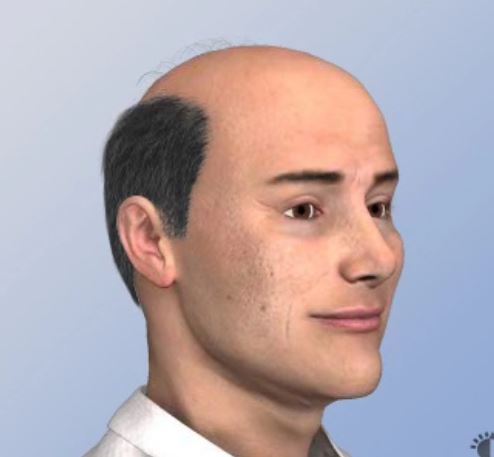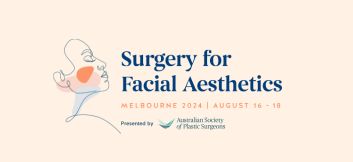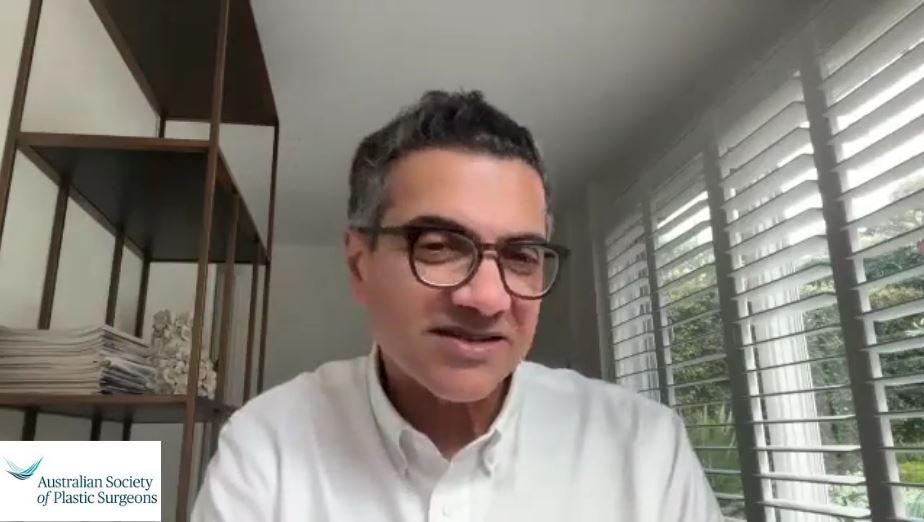Procedures
Hair Replacement Surgery
- About Your Specialist Plastic Surgeon
- Cosmetic
- Non-surgical Procedures
- Plastic Surgery Glossary
- Questions for Your Surgeon
- Reconstructive
- Surgical Procedures
- Abdominoplasty (Cosmetic)
- Abdominoplasty (muscle repair postpartum)
- Arm Lift
- Body Contouring
- Body Lift
- Breast Asymmetry Correction
- Breast Augmentation (Implants)
- Breast Implants with Lift
- Breast Lift
- Breast Reconstruction
- Breast Reduction
- Brow Lift
- Burns and Scarring
- Buttocks Lift
- Chin Surgery
- Cleft Lip & Palate
- Ear Surgery
- Eyelid Reduction Surgery
- Facelift Surgery
- Facial Implants
- Fat injection
- Gender Affirming Surgeries
- Gynaecomastia (Male Breast Reduction)
- Hair Replacement Surgery
- Hand Surgery
- Labiaplasty
- Liposuction
- Nipple Enhancement for Inverted Nipples
- Nose Surgery
- Scar Revision
- Skin Cancer
- Thigh Lift
- Tissue Expansion
Hair Replacement Surgery

Any surgical or invasive procedure carries risks. Before proceeding, you should seek a second opinion from an appropriately qualified health practitioner.
Hair loss is primarily caused by a combination of ageing, a change in hormones, and a family history of baldness. Hair loss can affect both men and women. As a rule, the earlier hair loss begins, the more severe the baldness will become. Hair loss can also be caused by burns or trauma.
Baldness is often blamed on poor circulation to the scalp, vitamin deficiencies, dandruff, and even excessive hat-wearing. All of these theories have been disproven. It’s also untrue that hair loss can be determined by looking at your maternal grandfather, or that men who still have their hair by forty years of age will never lose it.
Hair replacement surgery incorporates a range of transplant techniques to restore hair fullness. Transplant techniques, such as punch grafts, mini-grafts, micro-grafts, slit grafts, and strip grafts are generally performed on patients who desire a more modest change in hair fullness. Flaps, tissue-expansion and scalp-reduction are procedures that are usually more appropriate for patients who desire a more dramatic change. Sometimes, two or more techniques are used to achieve the best results
All hair replacement techniques use existing hair to achieve the optimal outcome. Grafts and flaps with healthy hair growth are taken from a donor area and relocated to a bald or thinning area. The result is hair growth in a previously affected area.
Hair replacement surgery is an individualised procedure and may not be suitable for everyone. Always talk to your Specialist Plastic Surgeon before making a decision. Your surgeon will assess your condition and general health, and plan the treatment that is best suited to you.
Before you decide to undergo hair replacement surgery, there are a few things you should keep in mind:
- Hair replacement candidates must have healthy hair growth at the back and sides of the head to serve as donor areas
- Hair colour, texture and waviness or curliness may affect the cosmetic result
- It is important to understand that you will never have the coverage you had prior to your hair loss, but surgery may camouflage the thin areas and give you more fullness
Hair replacement surgery may be a good option for you if:
- You are physically healthy and you do not have medical conditions that can impair healing or increase risk of surgery
- You have healthy hair growth at the back and sides of the head to serve as donor areas
- You have realistic expectations of what surgery can accomplish
You are a non-smoker or have stopped smoking
Hair replacement surgery is usually performed under a local anaesthesia with sedation. General anaesthesia may be used for more complex cases involving tissue expansion or flaps.
Modern anaesthesia is safe and effective, but does have some risks. Ask your Specialist Plastic Surgeon and anaesthetist for more information. Your surgeon and/or anaesthetist will ask you about all the medications you are taking or have taken, and any allergies you may have. Make sure you have an up to date list before the surgery.
Modern surgery is generally safe but does have the potential for risks and complications to occur.
Some potential risks and complications associated with hair replacement surgery include:
- Infection
- Excessive bleeding
- Wide scars, sometimes called “stretch-back” scars caused by tension during scalp reduction procedures
- A graft or grafts failing to “take”. Although it is normal for the hair contained within the plugs to fall out before establishing regrowth in its new location, sometimes the skin plug dies and surgery must be repeated
- An unnatural, “patchy” look after surgery. This may result-especially if the newly-placed hair lies next to patches of hair that continue to thin out. Additional surgery may be required
- Further surgery may be required to treat complications
Hair replacement surgery is usually performed in an accredited day surgery.
Before undergoing surgery, it is important that you:
- Be as fit as possible to help the recovery process
- Check with your surgeon about your medications as some may need to be stopped
- Stop smoking
You will also be asked to provide a complete medical history for your Specialist Plastic Surgeon including any health problems you have had, any medication you are taking or have taken, and any allergies you may have.
You may be advised to stop taking certain medicines such as non-steroidal anti-inflammatory drugs (NSAIDs), aspirin, and medicines that contain aspirin. You may also be asked to stop taking naturopathic substances such as garlic, ginkgo, ginseng and St John’s Wort as they may affect clotting and anaesthesia. Always tell your surgeon EVERYTHING you are taking.
You may be given medicines to take before the surgery, such as antibiotics.
Your surgeon will also advise you if any other tests are required, such as blood tests, X-ray examinations or an Electrocardiograph (ECG) to assess your heart
Prepare a “recovery area” in your home. This may include pillows, ice packs, a thermometer and a telephone within easy reach. Make sure you arrange for a relative or friend to drive you to and from the hospital or clinic. Someone should also stay with you for at least 24 hours after you return home.
Your surgeon should give detailed preoperative instructions. Follow them carefully.
Following your surgery, it is normal to feel some aching, swelling excessive tightness, or throbbing around the surgery site. Your Specialist Plastic Surgeon will prescribe pain medication if required.
If bandages are used, they will usually be removed one day later. You may gently wash your hair within two days following surgery. Any stitches will be removed after a week.
Avoid vigorous exercise and contact sports until otherwise advised by your surgeon. Strenuous activity increases blood flow to the scalp and may cause your transplants or incisions to bleed.
If you experience any bleeding, unusual symptoms or sever pain, contact you surgeon immediately.
Your surgeon will give you specific instructions on post-operative care. These instructions may include:
- How to care for your surgical site(s) following surgery
- Medications to apply or take orally to aid healing and reduce the risk of infection
- Specific concerns to look for at the surgical site(s) or in your general health
- When to follow-up with your surgeon
Be sure to ask your surgeon specific questions about what you can expect during your individual recovery period, such as:
- Where will I be taken after my surgery is complete?
- What medication will I be given or prescribed after surgery?
- Will I have dressings/bandages after surgery? If so, when will they be removed?
- Are stitches removed? When will they be removed?
- When can I resume normal activity and exercise?
- When do I return for follow-up care?
Depending on the extent of the procedure, some patients may require further treatment to attain the desired outcome. Revisional surgery may also be necessary to correct any irregularities.
Cost is always a consideration in elective surgery. Prices for a tummy tuck can vary widely between Specialist Plastic Surgeons. Some factors that may influence the cost include the surgeon’s experience, the type of procedure used and the geographic location of the office.
Costs associated with the procedure may include:
- Surgeon’s fee
- Hospital or surgical facility costs
- Anaesthesia fees
- Prescriptions for medication
- Post-surgery garments
- Medical tests
Your surgeon should welcome any questions you may have regarding fees.
- Flap techniques:
Surgical techniques used to reposition your own skin, muscle and fat - General anaesthesia:
Drugs and/or gases used during an operation to relieve pain and alter consciousness - Grafting:
The transfer of skin or other tissue from a healthy part of the body to repair the injured part - Intravenous sedation:
Sedatives administered by injection into a vein to help you relax - Local anaesthesia:
A drug injected directly to the site of an incision during an operation to relieve pain - Sutures:
Stitches used by surgeons to hold skin and tissue together - Stretch-Back Scars:
Wide scars that are caused by tension during scalp reduction procedures
Visit the Plastic Surgery Glossary for more medical terms.
This website is intended to provide you with general information only. This information is not a substitute for advice from your Specialist Plastic Surgeon and does not contain all the known facts about this procedure or every possible side effect of surgery. It is important that you speak to your surgeon before deciding to undergo surgery. If you are not sure about the benefits, risks and limitations of treatment, or anything else relating to your procedure, ask your surgeon to explain. Patient information provided as part of this website is evidence-based, and sourced from a range of reputable information providers including the American Society of Plastic Surgeons, Better Health Channel and Mi-tec medical publishing.
Featured Stories

Member Blog with Dr Ellis Choy: What is a Deep Plane Facelift?
Who is the ideal candidate for a deep plane facelift?…
Continue reading
